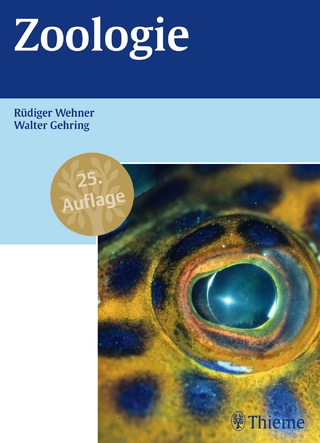
Crustaceans
CRC Press (Verlag)
978-1-032-39072-7 (ISBN)
In this book, leading world scientists have pooled their excellence to provide vibrant and expert views of fundamental biological and physiological mechanisms involving crustaceans. To this end, a comprehensive view of crustacean endocrinology and reproductive ecology is provided, along with information about their molecular physiology, adaptations, aquaculture and welfare. In particular, we attempted to span the breadth of their adaptations, presenting behavioral and physiological peculiarities, considering key groups of crustaceans to describe general features and global biodiversity. This book is offered as a tool for students and scientists in various fields of physiological, ecological, biotechnological and aquacultural research.
Valerio Zupo grew up as a marine biologist at the Stazione Zoologica Anton Dohrn, in a very fertile scientific environment corroborated by the presence of eminent scientists like R. Riedl, J. Romero, E. Fresi and L. Mazzella. His love for benthic ecology studies increased during a Fullbright fellowship at the Florida Institute of Technology and a Ph.D. at the University of Bruxelles. He cooperated with various institutes and centres in the world, from the Office of Naval Research (USA) to the University of Zurich, the Ben Gurion University in Israel, the University of Koeln in Germany, the University of Tasmania, the U.S. EPA, the UERJ in Brazil, the University of Barcelona in Spain, the Aix-Marseille University in France and many others, through a splendid scientific network that still produces plenty of exciting publications. He was a contract teacher for a course in Management of Marine Resources at the University Federico II of Naples (Italy) and served as a Unit Head at the Stazione Zoologica, for the production of model organisms for the scientific research. Dr. Zupo is a professional journalist and has published several books and hundreds of articles on various scientific topics, as well as for science dissemination. He is presently president of the International Society for Invertebrate Reproduction and Development (ISIRD) and has met various Nobel laureates during his career, providing motivation and hints, from Konrad Lorenz in Altenberg to Martin Chalfie and Tim Hunt that enriched the congress he organized in Italy, dedicated to the life rhythms of invertebrates. Presently, he is a researcher at the Stazione Zoologica Anton Dohrn of Naples and is associated with the department of eco-sustainable biotechnology. The passion of his life is a protandric shrimp exhibiting remarkable physiologic peculiarities, but his research spans from theoretical ecology to biodiversity issues, culture of sea urchins, global changes, ocean acidification, ecological modeling, chemical ecology, seagrass biology and aquaculture.
PHYSIOLOGY ISSUES. Crustacean Endocrinology: Fascinating Topic for Biologists or a Peculiar Opportunity for Biotechnologies? A Historical View with Functional Perspectives. Sexual Biology and Reproduction. Crustacean Yolk Proteins: Structure, Function and Diversity. Infochemicals Recognized by Crustaceans. Crustaceans as Good Marine Model Organisms to Study Stress Responses by –Omics Approaches. ECOLOGY AND TAXONOMY. Crustacean Decapods are Models to Describe the General Trends of Biodiversity According to Ocean Acidification. Isopod Crustaceans as Seagrass Consumers: A Mediterranean Perspective. Ecology and Ethology of Littoral Amphipods. Ethology of Crustaceans Influencing their Ecology. Crustacean Ecology in a Changing Climate. The Biodiversity of Freshwater Crustaceans Revealed by Taxonomy and Mitochondrial DNA Barcodes. AQUACULTURE AND BIOTECH. Crustaceans as Pathogens and Most Common Pathogens of Crustaceans. Biotechnologies Linked to Crustaceans. Copepods vs. Salmons: Environmental Treats for Crustaceans or Possible Eco-Sustainable Solutions? Automatic Culture of Crustaceans as Models for Science. Current Issues on Freshwater Crayfish Aquaculture with a Focus on Crustacean Welfare. Advanced Molecular Biology Techniques Applied to Crustacean Aquaculture.
| Erscheinungsdatum | 12.09.2024 |
|---|---|
| Zusatzinfo | 23 Tables, black and white; 4 Line drawings, color; 27 Line drawings, black and white; 5 Halftones, color; 11 Halftones, black and white; 9 Illustrations, color; 38 Illustrations, black and white |
| Verlagsort | London |
| Sprache | englisch |
| Maße | 156 x 234 mm |
| Gewicht | 566 g |
| Themenwelt | Naturwissenschaften ► Biologie ► Zoologie |
| Weitere Fachgebiete ► Land- / Forstwirtschaft / Fischerei | |
| ISBN-10 | 1-032-39072-7 / 1032390727 |
| ISBN-13 | 978-1-032-39072-7 / 9781032390727 |
| Zustand | Neuware |
| Informationen gemäß Produktsicherheitsverordnung (GPSR) | |
| Haben Sie eine Frage zum Produkt? |
aus dem Bereich


